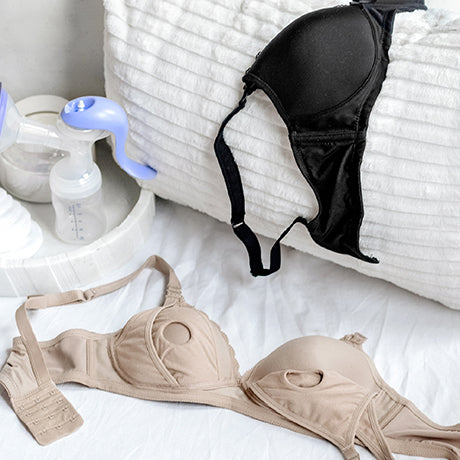World Breastfeeding Week: Mammals and Lactation
It’s World Breastfeeding Week so we’re jazzed about all things breast milk. As mammals, we have the unique ability to nurse our young. Do you ever wonder how other mammals breastfeed? Today we’re exploring fascinating trivia about mammals and lactation.
Mammals are classified by several physical characteristics including having spines, being warm blooded, growing hair on their bodies, requiring air to breathe, and giving birth and nursing their young. With all of these similarities, mammals are a very diverse bunch ranging from dogs, elephants and monkeys, to seals, dolphins and rodents. But all mammals have the amazing ability to breastfeed. Check out these fun facts about various mammals and lactation that we bet you didn’t know:
- Babies, babies everywhere: Usually mammals have around half as many babies in each pregnancy as they have nipples. For example, human females have two nipples and typically have one child at a time. The biggest liter ever reported was 33 babies from a naked mole rat.
-
 One big happy family: Most mammals only nurse from their own mothers. One exception is the lion. Since lions live in prides they are all close blood relatives and emotionally attached. Lionesses will nurse any of the cubs in the pride regardless of whether she gave birth to the little one.
One big happy family: Most mammals only nurse from their own mothers. One exception is the lion. Since lions live in prides they are all close blood relatives and emotionally attached. Lionesses will nurse any of the cubs in the pride regardless of whether she gave birth to the little one. - Where’s that milk: Mama whales can’t afford to have nipples flapping around as they swim underwater. To preserve their sleek, aqua-dynamic shape, their nipples are hidden in layers of blubber. When babies rub their noses against the area, milk squirts out for them to enjoy. Also, the Pacific Grey whale produces up to six tons of breast milk for one baby.
-
 Extended breastfeeding: Orangutans, the largest type of ape, spend the longest amount of time breastfeeding and caring for their young. Baby orangutans spend up to seven years coddling their babies, including breastfeeding them while hanging upside down.
Extended breastfeeding: Orangutans, the largest type of ape, spend the longest amount of time breastfeeding and caring for their young. Baby orangutans spend up to seven years coddling their babies, including breastfeeding them while hanging upside down. - They grow up so fast: Hooded seals have the shortest breastfeeding journey of only around four days. Because seals have to nurse out of the water, they rely on dangerous floating ice as their lactation room. The ice is unstable so childhood lasts for less than a week before these pups are on their own.
- Mysterious milk: The female platypus nurses its baby without even having nipples. How? She secretes milk through her mammary glands onto her skin and her babies lap it up.
-
 Water birth: It’s an alternative way for humans to give birth, but hippopotamuses have been doing it since the beginning of their species. Hippo mothers give birth to their babies underwater and guide them to the surface for air. The baby hippos then plunge back underwater to nurse and instinctually return to the surface for air.
Water birth: It’s an alternative way for humans to give birth, but hippopotamuses have been doing it since the beginning of their species. Hippo mothers give birth to their babies underwater and guide them to the surface for air. The baby hippos then plunge back underwater to nurse and instinctually return to the surface for air. - No diapers for one month: Okapi, a giraffe-like animal from Africa, do not poop for up to a month after birth. They perfectly metabolize their mother’s milk without having to eliminate any waste.
- And you thought your pregnancy was long: Larger animals tend to have longer gestation. Horses, whales and elephants have the longest gestation periods of all mammals. Compared to the average 266 days of gestation for humans, horses are pregnant for an average of 336 days. Whales can gestate between one year and 550 days, while elephants have the absolute longest average gestation of 624 days. Now that’s a long pregnancy!
- When its time to wean: In nature, weaning usually occurs when females are pregnant with another baby and are preparing for childbirth.
*Information obtained from Science Naturally and Breastfeeding USA.
The post World Breastfeeding Week: Mammals and Lactation appeared first on Leading Lady.





